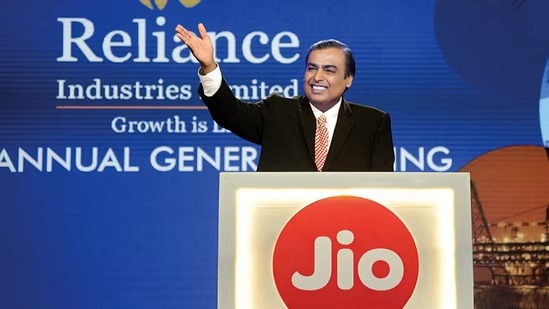S. Palanivelu, J.@mdashThe brief averments find in the suit plaint in O.S. No. 118 of 1988 is as follows:
The suit properties are the ancestral properties of Chinnapillai Udayar and his two brothers viz., Marudamuthu and Ratnam. They partitioned the properties some 40 years ago. Chinnapillai Udayar sold some of the properties allotted to him and purchased some of the suit properties. Hence all the suit properties are Hindu coparcenery joint family properties. 2nd defendant is the eldest son, plaintiff is the youngest son, 1st defendant''s mother Sampoornam and 3rd defendant are daughters of Chinnapillai. Marudamuthu, brother of Chinnapillai had no issues. Hence, he adopted 2nd and 3rd defendants and after the adoption 2nd and 3rd defendants were recognised as the son and daughter of Marudamuthu respectively, by relatives. So they are not entitled to the properties of Chinnapillai. The plaintiff and his father Chinnapillai were in enjoyment of the joint family properties from the year 1986. Chinnapillai has executed a settlement in favour of the 2nd defendant whereby some of the suit properties were settled to 2nd defendant. The settlement is void and it will not in any way affect the right of the plaintiff. Chinnapillai died in the year 1986. His wife Sampoornammal pre-deceased him. The plaintiff is entitled half share by birth and 1/4th share by succession and other 1/4th share will go to the 1st defendant. The 2nd and 3rd defendants have no shares in the joint family properties. Therefore, the plaintiff claims 3/4th share in the suit properties.
In the written statement filed by the 1st defendant it is stated that the relationship set out in the plaint is true. 2nd and 3rd defendants are the adopted children of Marudamuthu and they have nothing to do with the properties of Chinnapillai. Since the suit properties are joint family properties, the averments of the plaintiff is true and correct. This defendant is ready to pay court fee for his share if necessary and the defendants 2 and 3 are unnecessary parties. The suit may be decreed as prayed for.
2. The contents contained in the written statement filed by the 2nd defendant and adopted by the 3rd defendant are as follows:
The relationship set out is true. Marudamuthu died issueless leaving his wife Ponnammal. Chinnapillai died leaving two daughters and two sons including 2nd and 3rd defendants. It is not correct to state that the 2nd and 3rd defendants were adopted by Marudamuthu. They took the initial of Marudamuthu out of love and affection only. Chinnapillai has purchased item 1 to 11 of the suit properties out of his earnings. These properties were not treated as joint family properties. They were treated as self acquired properties of Chinnapillai. On 23.7.85 Chinnapillai Udayar settled the item 1 to 11 properties in favour of 2nd defendant by way of settlement deed. The plaintiff did not question it till his father was alive. This defendant was in exclusive possession of those properties and patta was issued in his name and kist was paid in his name. Pattas of item 1 and 3 are in the names of plaintiff and 2nd defendant. 2nd item is in the names of plaintiff, 2nd defendant and Ratnam. 4th item was common to all three brothers and Chinnapillai. Marudamuthu entitled to 4 1/3 cents out of 13 cents in item No. 4, and 3 cents in item No. 6 which was gifted to 2nd defendant by gift deed dated 7.2.86. Item No. 7 was common to plaintiff''s father and his uncle Ratnam. Ratnam relinquished his share to Chinnapillai and Marudamuthu. Marudamuthu has already executed a settlement deed in favour of 2nd defendant on 17.8.1986 regarding his share in the suit property. The plaintiff cannot question and include them in the suit. The plaintiff is not entitled 3/4th share in all the suit properties. 2nd defendant is also entitled 1/4th share of Chinnapillai in item No. 4 from the share of Marudamuthu. Therefore, his share should be partitioned and allotted to him.
3. On the plaintiff''s side 2 witnesses were examined and 1 exhibit was marked and on the side of the defendants 3 witnesses were examined and 22 documents were exhibited. After perused the oral testimony and documents of both sides, the trial Court has decreed the suit as prayed for accepting the contention of the plaintiff. In the appeal preferred by the 2nd defendant, the learned Principal District Judge, Tiruchirappalli confirmed the preliminary decree and judgment of the lower Court Aggrieved against that the 2nd defendant has preferred this Second Appeal.
4. In this Second Appeal the following substantial question of law has arisen for consideration:
Can the theory of adoption be accepted or presumed in the absence of proof of giving and taking and consent of both parties?
Point:
5. Both the trial Court and 1st Appellate Court have concurrently recorded findings that the 2nd and 3rd defendants are adopted children of Marudamuthu. Both the learned counsel would argue their respective contentions as to the factum of adoption on the basis of the exhibits and evidence on record. It is alleged in the plaint that the brothers Marudamuthu and Chinnapillai were living together under one roof and Marudamuthu had no children. He adopted 2nd and 3rd defendants who are son and daughter of Chinnapillai with the consent of his wife, some 10 years ago even in the childhood of 2nd and 3rd defendants. In the statement filed by the 2nd defendant it is pleaded that the 2nd and 3rd defendants were taking the initial of Marudamuthu out of love and affection. But that would not mean that they were taken in adoption by Marudamuthu. It is the admitted case of the 2nd defendant that both 2nd and 3rd defendants were not given adoption and in Ex. B-1 Gift deed his name is mentioned as "(sic)" and it is also stated that he is son of Chinnapillai Udayar. In Ex. B-8 which is a copy of judgment in CC. No. 5 of 1971 on the file of the Executive III Class Magistrate, Perambalur, 2nd defendant''s name is written as Son of Chinnapillai Udayar. In Ex. B-9 Patta issued in 1987, 2nd defendant''s name is written as son of Marudamuthu Udayar. Referring to Exs. B-1 and B-8, the trial Court has stated in its judgment that Exs. B1 and B8 documents came to existence at the behest of Chinnapillai Udayar and hence they are not binding on the plaintiff.
6. The second defendant is a Government servant. He admits in his evidence that in the school records and office records he has been referred as son of Marudamuthu. He also says that in the Transfer Certificate Ex. A-1 issued to the 3rd defendant she has been mentioned as daughter of Marudamuthu. Ex. A-1 is the transfer certificate issued by the Ariyalur Government High School, in which it is stated that Marudamuthu is father of 3rd defendant. The oral testimony of P.W. 2 plays vital role in this case. He came to be the resident of Allinagaram where the parties have been living. At the time of examination he was 62 years. He would say that in a function held in the house of Marudamuthu about 35 years back, he attended, which was a function for adoption of 2nd and 3rd defendants, children of Chinnapillai Udayar and Chinnapillai Ammal by Marudamuthu. His evidence further goes to the effect that at the time of adoption, the wives of Chinnapillai and Marudamuthu were present, that the age of 2nd and 3rd defendants were about 10 years and 4 years respectively, that Chinnapillai Udayar caught hold the hands of the children and expressed that he was giving both children in adoption.
7. In the cross examination, P.W. 2 would say that the wife of Marudamuthu accepted to take the children in adoption, that Chinnapillai gave the hands of Pitchaipillai and Mynavathi to Marudamuthu. He also lifted Mynavathi and handed over her to Marudamuthu. His cross examination goes to the effect that except him, the witnesses who have participated in the adoption were not alive and that no homam was performed in that adoption function. So many questions were put to him to discredit his evidence by saying that he is having enmity with the 2nd defendant. But no material is found in the cross examination in favour of second defendant. No motive could be attributed against the 2nd and 3rd defendants. There is nothing wrong to place reliance upon the oral evidence of P.W. 2 in the absence of any motive on his part.
8. Mr. Vaithyalingam, the learned counsel appearing for the defendants 2 and 3 laboured hard to convince this Court said that the 2nd and 3rd defendants have not given adoption by their parents. The learned counsel for the appellant would also rely the Judgment in
9. The learned Senior Counsel Mr. C. Selvaraj appearing for R1 would contend that inasmuch as the documents and oral evidence of the P.Ws. would show that the 2nd and 3rd defendants were already given in adoption, there is no valid ground to disturb the findings of the Court below and the plaintiff has very well proved that the 2nd and 3rd defendants were taken in adoption by Marudamuthu. As far as the giving and taking of children in adoption is concerned, it is spoken to by P.W. 2. His evidence is depicting the celebrations of adoption in which both the children were given in adoption by Chinna Pillai and taken in adoption by Marudamuthu. Hence necessary ingredients as required by statute has been established by the plaintiff. Section 11 of Hindu Adoptions and Maintenance Act provides that the performance of datta homam shall not be essential to the validity of an adoption. In view of the above, it is seen that the combined effect of the features available in the exhibits and oral testimony of P.W. 2 would indicate that the adoption of 2nd and 3rd defendants was held in which both of them were given in adoption by Chinnapillai and taken in adoption by Marudamuthu.
10. As far as the Settlement Deed Ex. B. 2 is concerned, both the Courts below have concurrently held it is not legally valid, since the attesting witness D.W. 3 has not stated, that whether he saw the other witness signing the document Ex. B-2 or other witnesses saw him putting his signatures in Ex. B-2 and hence Ex. B-2 is not valid. The trial Court has placed reliance upon the judgment in N. Ramasamy Padayachi v. C. Ramasami Padayachi and Others 1975 TNLJ 88 and followed the judgment to decide and to say that Ex. B-2 is not valid. The findings of Court below are quite appropriate.
11. In the light of the observations and findings recorded above, this Court is of the considered view that there is adequate pleadings and evidence to prove as far as giving and taking of the children in adoption and hence this second appeal will go as the 2nd and 3rd defendants were received in adoption and all the ties of the children in the natural family shall be deemed to be severed and replaced by those created by the adoption in the adoptive family.
12. In view of the above, the judgements passed by the Court below are necessarily to be confirmed and accordingly they are confirmed. The Second Appeal is liable to be dismissed. The substantial question of law is answered as above. In fine, the Second Appeal is dismissed. No costs.

